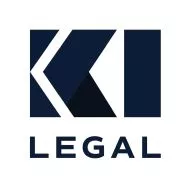Due to the potentially burdensome costs – financial and otherwise – associated with filing for bankruptcy, the Bankruptcy Code distinguishes between small business debtors and large business debtors. The Bankruptcy Code provides that a small business debtor, as defined in section 101(51D), may proceed in Chapter 11 under slightly modified rules as a small business case. These modified rules are designed to help small businesses move quickly through Chapter 11, cut legal and other restructuring costs, and minimize the time and expense required to confirm a Chapter 11 plan of reorganization.
Note that the new option of subchapter V of Chapter 11 is available for small businesses which meet aggregate liability caps. Though not the subject of this current article, a discussion of the new subchapter V process can be found in our prior article – Small Business Bankruptcy Under Subchapter V.
In order to proceed as a small business case, a debtor or its affiliate must engage in commercial or business activities other than having its primary business activity be owning a single piece of real estate. The debtor may not have more than $3,024,725 (or $7,500,000 in a subchapter V case) in noncontingent, liquidated, secured, and unsecured debts, of which 50% must have arisen from commercial or business activities, excluding debts owed to affiliates or insiders. It must not be a corporation subject to the reporting requirements under section 13 or 15(d) of the Securities and Exchange Act of 1934.
Determining whether to proceed as a small business case depends on factors such as whether the debtor's operations can be maintained and whether the debtor can propose a feasible plan of reorganization. While not a plausible route for all small businesses, there are certain issues small businesses face that often result in successful Chapter 11s. For example, Chapter 11 may be a viable option when the small business has executory contracts and unexpired leases that are not advantageous or contain above-market pricing terms. The option to reject such problematic contracts or leases in bankruptcy sometimes acts as a powerful negotiation tool to reduce the burdensome or above-market terms contained in the lease or contract.
Small business debtors have significant reporting requirements in Chapter 11. Periodically, small business debtors are required to file the following (though not an exhaustive list) -
- Financial reports on profitability,
- Reasonable estimates of projected cash receipts and disbursements,
- Comparisons of actual receipts and disbursements to those projected in earlier reports,
- Proof of compliance with post-petition duties imposed by the Code, and
- Monthly operating reports.
The rationale for such stringent requirements is to demonstrate the debtor's ability to make the payments which it will propose to make to its creditors under its proposed plan of reorganization.
In addition to these reporting requirements, the Bankruptcy Code provides separate provisions applicable to small business cases that affect the pace and course of the case. One such provision is the automatic stay, which is triggered immediately upon filing bankruptcy, and automatically stops almost all acts and proceedings against the debtor and its property. Another such provision is the court's ability to waive the requirement that the debtor file a disclosure statement, which provides extensive information about the debtor and the proposed plan. The disclosure statement is often expensive to prepare. Section 1125(f) reduces and adjusts a small business debtor's disclosure obligations to curb the expenses associated with it.
Deciding whether to proceed as a small business case involves an analysis of assets and liabilities, determination of operating cash requirements and availability, assessment of the debtor's ability to obtain new financing, and identification of secured creditors and their priority. The process is extensive which is why consulting with experienced bankruptcy counsel is paramount.
The content of this article is intended to provide a general guide to the subject matter. Specialist advice should be sought about your specific circumstances.



